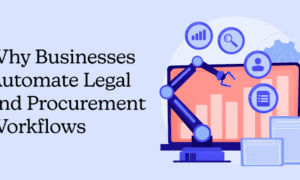When it comes to managing your finances and sticking to a budget, having the right tools is key. There are countless budgeting tools available on the market today, each with their own unique features and benefits. In this blog post, we will compare two popular budgeting tools – Tiller vs YNAB – and help you determine which one is the best fit for your needs. (Pocketsmith is another competitor worthy of comparison)
What is Tiller?
Tiller is a budgeting tool that connects to your bank and credit card accounts to automatically import and categorize your transactions. This allows you to see a real-time view of your spending, income, and net worth, and helps you stay on track with your budget. Tiller also offers customizable budget templates and automatic budgeting rules, so you can set up your budget quickly and easily.
One of the standout features of Tiller is its integration with Google Sheets, which allows you to view and manage your budget in a familiar spreadsheet format. This can be especially useful for users who are already familiar with Google Sheets and want to take advantage of its powerful formulas and customization options. Tiller also offers a range of other features, such as bill tracking, account aggregation, and personalized support from a dedicated team of budgeting experts.
What is YNAB?
YNAB, or You Need a Budget, is another popular budgeting tool that helps you track your spending and stay on top of your budget. Like Tiller, YNAB allows you to connect your bank and credit card accounts to automatically import and categorize your transactions. However, YNAB takes a different approach to budgeting, using a set of four rules to help you manage your money more effectively.
The first rule of YNAB is to give every dollar a job. This means setting aside money for each of your budget categories, and making sure every dollar you earn has a specific purpose. The second rule is to embrace your true expenses, which means planning for large, infrequent expenses, such as insurance premiums or annual subscriptions. The third rule is to roll with the punches, which means adjusting your budget as needed to account for overspending or unexpected expenses. The fourth rule is to age your money, which means using your income from the previous month to pay for your current expenses, rather than living paycheck to paycheck.
YNAB also offers a range of features, such as goal tracking, automatic budget updates, and access to a supportive community of fellow budgeters. Unlike Tiller, YNAB does not offer integration with Google Sheets, but it does offer a mobile app for tracking your budget on the go.
Tiller vs YNAB: Which is Right for You?
So, which budgeting tool is right for you – Tiller or YNAB? The answer will depend on your personal preferences and budgeting needs. Here are a few key factors to consider when choosing between these two tools:
- Integration with Google Sheets: If you are a fan of Google Sheets and want to use its powerful formulas and customization options to manage your budget, Tiller is the clear choice. YNAB does not offer integration with Google Sheets, so you will need to use its built-in budgeting tools instead.
- Budgeting approach: Tiller and YNAB take different approaches to budgeting, so it’s important to consider which approach aligns better with your own budgeting style and goals. Tiller offers customizable budget templates and automatic budgeting rules, which can be useful for users who want to set up their budget quickly and easily. YNAB, on the other hand, uses a set of four rules to help you manage your money more effectively, which may be a better fit for users who want to take a more proactive and intentional approach to budgeting.
- Additional features: Tiller and YNAB offer a range of additional features, such as bill tracking, account aggregation, and mobile app support. Consider which features are most important to you and which tool offers the best combination of features for your needs. For example, Tiller’s integration with Google Sheets and personalized support from a dedicated team of budgeting experts may be appealing to some users, while YNAB’s goal tracking and access to a supportive community of fellow budgeters may be more appealing to others.
- Price: Both Tiller and YNAB are subscription-based tools, with monthly or annual pricing options. Tiller offers a free 30-day trial, while YNAB offers a 34-day free trial. Consider your budget and which pricing option is more affordable and flexible for you.
Ultimately, the choice between Tiller and YNAB will come down to personal preference and your specific budgeting needs. Both tools offer powerful features and can help you manage your money more effectively. Click here to try Tiller and sign up for a free 30-day trial. Or try YNAB, by visiting their website and sign up for a 34-day free trial.

































